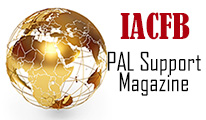
Although Commercial Finance Consultants Magazine focuses primarily on factoring and working-capital advisory, it’s impossible to ignore a wider reality: consulting in general is booming. Companies across industries are trimming headcount yet still need outcomes—systems implemented, pipelines fixed, costs reduced, cash converted. They’re increasingly comfortable buying those outcomes from independent experts who work remotely. For many readers—especially brokers and finance professionals—consulting isn’t a detour; it’s an adjacent lane that deepens relationships and opens new revenue without abandoning your core specialty.
Consulting succeeds now because it solves two problems at once. On the client side, leaders want variable-cost expertise that can start next week, not next quarter. On the professional side, seasoned operators want control of their time, clients, and upside—particularly if their current role sits in an industry being reshaped by automation and artificial intelligence. A home-based consulting practice gives you that control with surprisingly low overhead: a quiet room, a repeatable offer, and the discipline to publish, propose, and deliver on schedule.
For those already advising on receivables finance, this path is natural. You’re accustomed to diagnosing cash-conversion issues, packaging files, coordinating with bankers, and managing expectations through closing. Those same muscles power paid consulting—cash-flow diagnostics, 13-week forecasting, AR and collections redesign, working-capital playbooks for seasonal businesses, even “funding readiness” programs that prepare owners for bank credit, SBA loans, or a future ABL. And because consultants are not mortgage originators, you can team with local lenders on “two-product” solutions: the bank handles a client’s real-estate cash-out or HELOC, while you stabilize the day-to-day through receivables process improvements or a factoring line. The result is a client who actually sleeps at night—and a banker who remembers who made that happen.
If you’re pivoting into consulting because your current vocation feels shaky in the era of AI, the opportunity is larger than replacement income. The quickest way to future-proof your career is to move upstream from tasks to outcomes. AI can draft a memo; it cannot own a result in a complex, political organization. Your leverage comes from scoping the business problem, choosing tools (including AI) to compress cycle time, and being accountable for success. Practical niches are everywhere: cash-flow and pricing strategy for SMBs; RevOps and CRM cleanups; supply-chain and vendor-terms optimization; data and dashboarding; policy and compliance; FP&A-lite for owners who’ve never seen a true rolling forecast; implementation partner for platforms (QuickBooks, NetSuite, HubSpot, Monday, Gusto). Anchor yourself to a specific problem that crops up repeatedly and publish how you solve it.
Packaging matters. General “consulting” is hard to buy; productized services are easy. A simple three-tier structure works across disciplines: Assessment (fixed-fee diagnostic with a roadmap and quick wins), Implementation Sprint (30–60 days to install the processes/systems you recommend), and Ongoing Advisory (retainer for cadence calls, KPI maintenance, and continuous improvement). Fixed scope, fixed deliverables, fixed price. Prospects move faster when they see the finish line.
Go-to-market is not complicated, but it is intentional. Start where you already have credibility: past clients, lenders, accountants, attorneys, and operators who took your calls when you were brokering deals. Book three coffees a week; ask what is breaking right now in their world; offer a short diagnostic to show value inside seven days. Publish something small and useful every week—a one-page template, a checklist, a before/after metric. Host a short Zoom workshop monthly with a banker or CPA as your co-pilot. Consistency beats volume. A handful of well-placed artifacts and conversations will produce more pipeline than any ad campaign.
Success from a home office also depends on professional hygiene. Treat your desk like a client site: scheduled deep-work blocks, a visible kanban or project tracker, a standard operating procedure for every repeatable task. Guard rails reduce stress—screening calls weekly to keep your client mix healthy; a slim “no” list (projects you won’t accept); and a weekly finance ritual where you review cash in/cash out, pipeline, and delivery obligations. You’ll discover that the freedom of consulting actually grows with structure.
Below are the few tools you’ll want on day one, regardless of your niche (keep it simple; you can upgrade as you grow):
-
Website with blog (your digital storefront) + analytics. Publish briefs and case notes to create inbound trust.
-
Lightweight CRM to track conversations, deals, and follow-ups; connect your email and calendar booking.
-
Document stack: proposal/quote tool, e-signature, and a library of SOW/MSA templates.
-
Project management board and knowledge base for checklists, SOPs, and deliverables.
-
Accounting & invoicing (with online payments) and time tracking if you offer hourly discovery.
-
File storage/sharing (client folders), password manager, and reliable video meeting software.
-
Email newsletter for monthly insights, plus social media scheduling for LinkedIn posts.
-
AI helpers for drafting, transcribing meetings, and first-pass analysis—used ethically, with client consent.
Two caution flags are worth flying. First, scope creep is the margin killer. Your SOW should list what’s in, what’s out, and exactly how changes are priced. Second, data security and independence are non-negotiable. Use client-specific accounts in any system; avoid commingling data; get cyber/E&O coverage as soon as you can. If you opine on regulated topics (tax, legal, HR), draw a bright line around your lane and collaborate with licensed pros.
As you build momentum, layer in a banker-centric angle. Lenders are overloaded with borrowers who need both a lump-sum fix and operational stability. Offer a co-branded, 15-minute “funding readiness” review for their small-business customers: a rolling 13-week cash-flow, AR aging and dilution scan, vendor-terms audit, and a simple playbook to accelerate cash conversion. You’re not replacing the bank’s credit; you’re making it work by aligning operating rhythm to debt service. This is where finance consultants shine—bridging the gap between a term sheet and a business that can honor it.
AI deserves a final word. It will not eliminate the need for consultants; it will change which consultants thrive. The winners will be those who combine judgment with leverage: designing processes that let AI and software do the heavy lifting while you hold the standard for quality and accountability. Tell clients that plainly. Your value is not “typing faster”; it’s selecting the right goals, building the right pipeline, and delivering the promised result with fewer meetings and fewer surprises. AI helps you do that at a price point small businesses can accept.
If you’re waiting for perfect timing, you’ll wait forever. Start with one offer, one client profile, one channel. Publish one useful thing this week. Schedule three conversations next week. Deliver one small victory for a paying client this month. Then do it again. Consulting from a home office is not a fantasy job; it is simply work with purpose—solving real problems for people who are relieved to meet someone who can. And for commercial finance professionals, it’s the most natural extension of what you already do: translate complexity, unlock cash, and make growth possible.

